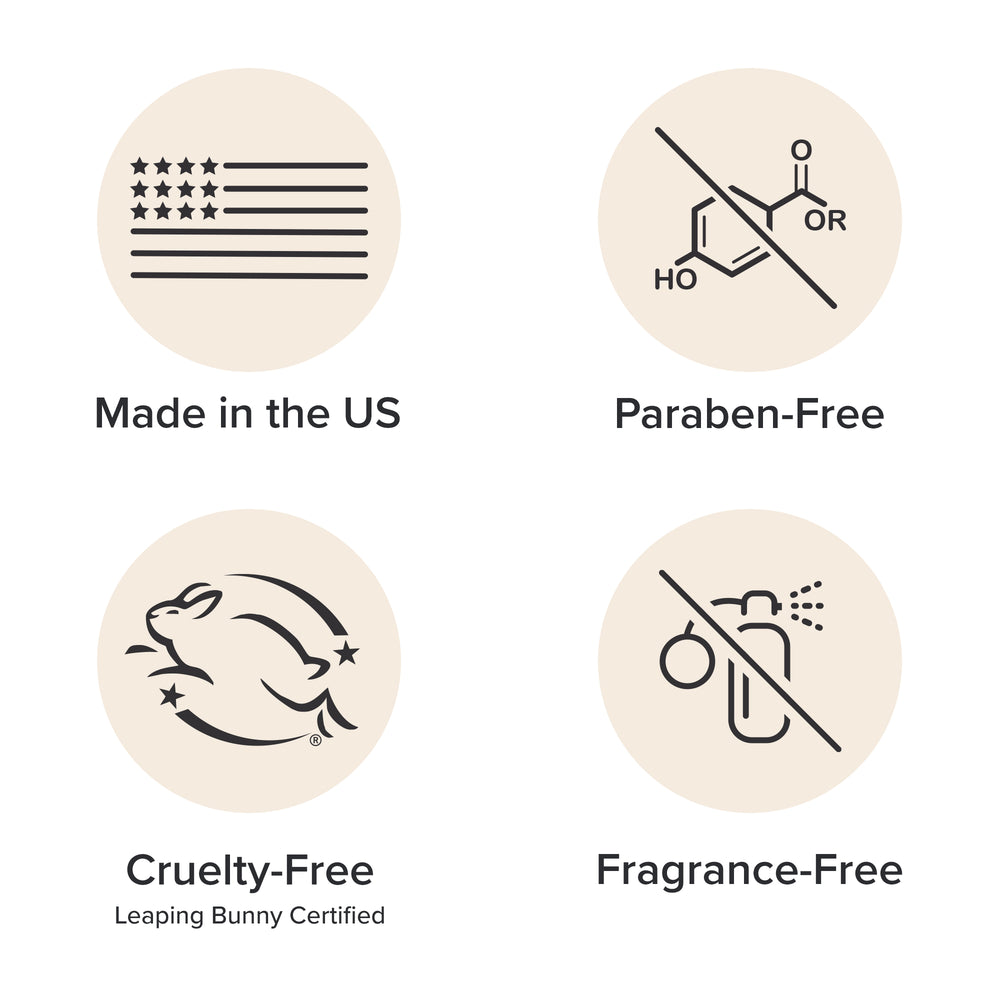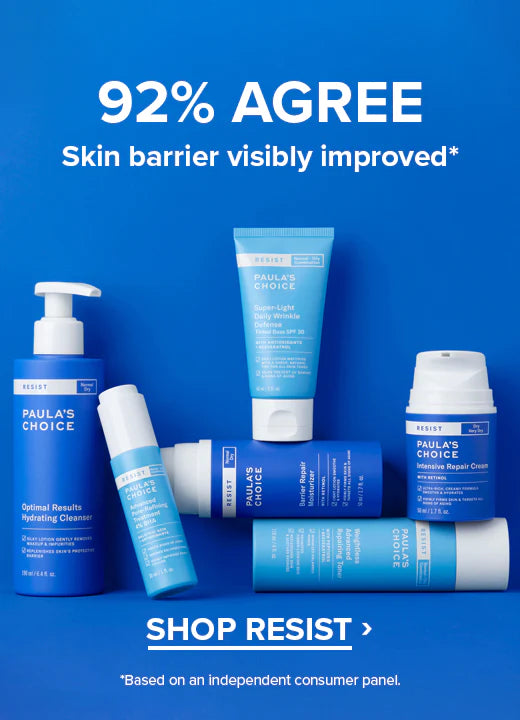Written by: Bryan Barron
Updated on: 1/20/2024
In this article:
How to get smooth skin on your face
How to get smooth skin on your body
Why is my skin not smooth?
Most of us have wondered how to get smooth skin at one point or another. From acne and clogged pores to dry skin, wrinkles and texture changes caused by sun damage, the quest for silky skin can seem never-ending. Fortunately, decades of published research reveal that getting velvety skin is easier than you might think (1,2). We’ll explain how to do that and how to keep it that way.
How to get smooth skin on your face
Daytime Routine:
Step 1: Cleanse with a gentle non-drying cleanser
Step 2: Apply a leave-on exfoliant or exfoliating toner
Step 3: Apply moisturizer with sun protection
The first step is to wash with a gentle, fragrance-free cleanser morning and evening. A gentle cleanser won’t dry out skin; instead, it will remove what needs to go while leaving skin softer (3).
The next step is to apply a leave-on exfoliant or exfoliating toner once or twice daily. It should contain alpha hydroxy acids (AHAs) such as glycolic or lactic acids or beta hydroxy acid (BHA), also known as salicylic acid. AHAs are preferred for normal to dry skin with rough texture and other signs of sun damage. If your skin has these issues and is sensitive, consider an AHA exfolianting toner featuring gentle-yet-effective mandelic acid. BHA is preferred for combination to oily skin and anyone struggling with redness, clogged pores and breakouts.
A well-formulated leave-on exfoliator for smooth skin quickly, but gently dissolves the bonds that hold dull, spent cells to the surface. The oil soluble nature of BHA allows it to penetrate the pore lining, where it works to undo clogs and eliminate bumps on skin’s surface. Both AHA and BHA also have hydrating properties since they influence how skin attracts and holds moisture, and moisturized skin always looks and feels more even (4,5).
That brings us to the importance of hydration and, surprisingly, sun protection. Why? Because unprotected daily exposure to UV light steadily depletes substances skin needs to maintain suppleness. Skipping the moisturizer with SPF step instantly sets your silky skin goals back, so slather it on (6, 7)!
Nighttime is when you can treat your face to a layered approach to hydration. Why layer? The logic is that applying thinner-textured hydrating products like alcohol-free toners for silky skin and skin-smoothing serums followed by richer but still skin type-appropriate moisturizers or oils gives your skin a brilliant assortment of the ingredients it needs to look and feel petal-soft. This approach also keeps skin looking polished for hours (8).
Nighttime Routine:
1. Cleanse with your gentle cleanser and pat skin dry
2. Apply a hydrating toner
3. Apply an AHA or BHA exfoliant or exfoliating toner
4. Apply a serum whose formula matches your skin type and concerns
5. Apply a booster-type product loaded with moisture magnets like hyaluronic acid
6. Apply a skin-smoothing moisturizer for your skin type
7. If skin is dry to very dry, “seal” this mix with a few drops of fragrance-free oil blend
How to get smooth skin on your body
Both facial and body skin can have the same issues, but there are also some differences. Facial skin is more exposed than most body skin, so it tends to be more sensitive and prone to environmental damage that impacts smoothness (9).
But body skin also has its own issues, like sun damage-related texture changes on the chest or seasonal dry, scaly skin on legs, or issues from hair removal.
What to do? The same advice of daily sun protection on all exposed skin from the neck down applies, plus these tips:
- Avoid taking long (5 minutes or more) hot showers, as this breaks down skin’s protective barrier. A strong, intact barrier is essential.
- Use a gentle, fragrance-free or minimally fragranced body wash that has a creamy, moisturizing texture to soften skin.
- Avoid harsh body scrubs, loofahs, or dry brushing as a means of exfoliating; all can irritate skin and damage its barrier. Instead, use an AHA or BHA body lotion applied on its own or under your regular body moisturizer.
- If body skin is dry or dehydrated, mix a few drops of a non-fragrant plant oil blend with a body moisturizer rich in ingredients like shea butter, ceramides, and glycerin.
Why is my skin not smooth?
Skin can become rough and lose smoothness for dozens of reasons. Along with UV light exposure, airborne pollutants also contribute (10), as does use of highly fragrant skin care, irritating ingredients like essential oils, denatured alcohol, and menthol, harsh scrubs, and dry skin disorders dermatologists refer to as atopic dermatitis.
Irritating ingredients are particularly adept at getting in the way of you having smoother skin. They destroy vital substances found in skin’s natural moisturizing factor (NMF), which plays a critical role in maintaining the balanced hydration that’s a hallmark of naturally smooth skin (11, 12).
The trick is to avoid products or habits that can damage skin and ensure your routine involves daily environmental protection, moisture replenishment, and giving skin a range of beneficial ingredients so it can maintain long-lasting suppleness.
Learn more about products for smooth skin on face and body.
References for this information:
1. International Open Access Journal of the American Society of Plastic Surgeons, December 2016, ePublication
2. Dermatologic Surgery, December 2016, pages 1,354-1,361
3. Indian Journal of Dermatology, January-February 2011, pages 2-6
4. Clinical, Cosmetic, and Investigational Dermatology, December 2014, pages 9-17
5. Clinical, Cosmetic, and Investigational Dermatology, August 2015, pages 455-461
6. International Journal of Cosmetic Science, June 2017, pages 269-274
7. Dermatologic Surgery, December 2016, pages 1,354-1,361
8. Clinical Medicine and Research, December 2017, pages 75-87
9. The Scientific World Journal, March 2012, ePublication
10. Frontiers in Pharmacology, July 2019, ePublication
11. Contact Dermatitis, August 2018, pages 59-66
12. Contact Dermatitis, November 2017, pages 270-279








